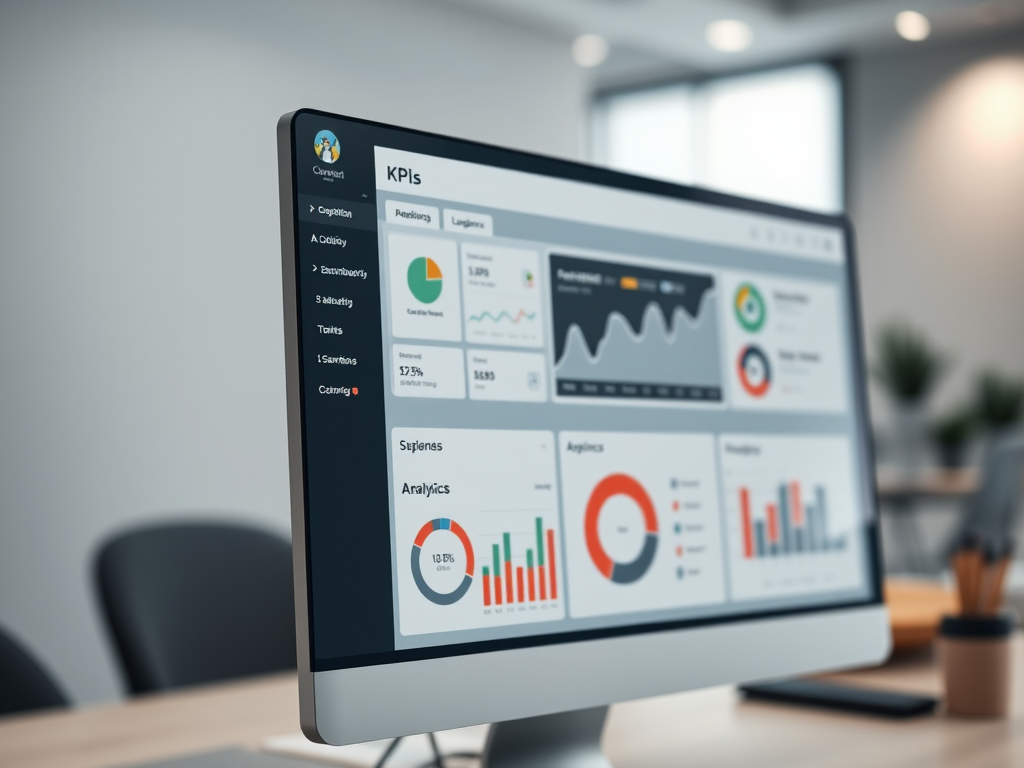In today’s digital world, where every click, like, and share can provide insights into consumer behavior, harnessing data-driven content is no longer optional—it’s essential. Marketers who leverage analytics can create highly targeted campaigns that resonate on a deeper level. Gone are the days of guessing what your audience wants; we now possess the tools to discern actionable insights from complex data sets. Understanding your audience’s preferences not only streamlines content creation but it also significantly enhances engagement and conversion rates. This approach opens the door to more personalized interactions, driving both brand loyalty and customer satisfaction. Let’s dive into how data-driven content can elevate your marketing strategy to new heights.
The Importance of Data in Content Creation

Data serves as the backbone of effective content strategy, guiding creators to develop pieces that resonate with their target market. Significant insights are derived from analyzing audience behaviors and preferences, which help marketers craft relevant, engaging, and efficient content. The ability to make data-informed decisions can lead to higher return on investments (ROIs) as your campaigns become more aligned with actual audience needs rather than assumptions. Embracing a data-centric approach results in more streamlined communication and engagement due to its tailored nature. Moreover, gathering rich insights cuts through the noise of generic content, allowing brands to stand out compellingly. Ultimately, data-driven content leads to achieving deeper connections with the audience, driving conversions in a highly competitive market landscape.
How to Collect and Analyze Data for Content Strategy

Gathering the right data requires a strategic approach, incorporating various methodologies and tools. Start by identifying your primary data sources, which could include website analytics, social media metrics, and customer feedback. Utilize tools such as Google Analytics or SEMrush for insights into visitor behavior and preferences. It’s also crucial to mix quantitative and qualitative data, as both types provide valuable perspectives. Through surveys, interviews, and social listening, you can glean insights into customer sentiments and trends that complement hard metrics. Once data is collected, analyzing these materials efficiently drives your decision-making process about content direction.
| Data Type | Sources | Uses |
|---|---|---|
| Quantitative | Google Analytics, CRM data | Measuring engagement, traffic, and conversions |
| Qualitative | Surveys, social media comments | Understanding customer sentiment and pain points |
| Competitive | Market research, competitor analysis | Identifying market trends and benchmarking |
Crafting Content Based on Data Insights
The true power of data lies in its application to content creation. By tapping into insights drawn from analytics, marketers can develop content that directly addresses consumer desires and pain points. Tailoring content to fit specific audiences not only enhances engagement but also fosters brand loyalty. Consider segmenting your audience based on demographics, interests, or buying behaviors; this can pave the way for highly relevant content pieces. For instance, offering content that educates different segments on product usage can significantly reduce friction along the customer journey. This tailored approach results in a rich user experience that keeps visitors coming back for more.
Leveraging data for personalization can dramatically uplift user engagement and satisfaction. Here are some effective techniques to consider:
- Segmented Email Campaigns: Tailoring email content based on user behavior leads to increased open rates and conversions.
- Dynamic Website Content: Personalizing website experiences based on visitor data can enhance engagement and reduce bounce rates.
- Social Media Retargeting: Utilizing data to retarget visitors with specific ads based on their previous interactions with your brand.
Measuring the Impact of Data-Driven Content
Creating content is only part of the equation; measuring its success is equally critical. To accurately gauge effectiveness, organizations need to deploy various tools and metrics. Employing analytics platforms like Google Analytics helps quantify visitor interactions while tools like BuzzSumo shed light on content performance across social media. Regularly reviewing these metrics enables marketers to fine-tune their approach and adapt quickly to emerging trends and consumer behaviors. Additionally, incorporating feedback loops will ensure that the content continues to meet user expectations and ambitions. Adopting a continuous improvement mindset leads to sustained success and relentless growth in the content marketing arena.
Below are several tools that can be invaluable in measuring content performance:
- Google Analytics: Ideal for tracking website traffic, user behavior, and conversion rates.
- SEMrush: Excellent for keyword tracking and understanding SEO performance.
- BuzzSumo: Great for discovering trending content and analyzing social shares.
Challenges of Implementing Data-Driven Content
While data-driven content offers burgeoning advantages, there are inherent challenges that marketers must navigate. The sheer volume of data available can lead to information overload, creating confusion over which insights to act upon. Maintaining data privacy and compliance with regulations is crucial to build trust and avoid legal ramifications. Additionally, ensuring data accuracy is vital; faulty data can lead to misguided strategies that misinterpret audience needs. Marketers must also be prepared for shifts in consumer behavior as they adapt to ever-changing market dynamics. Addressing these challenges typically involves continuous learning, collaboration, and the agility to shift tactics as needed.
Best Practices for Data-Driven Content Marketing
Implementing data-driven strategies requires careful planning and execution to ensure success. Best practices must be in place to maximize the efficacy of your marketing efforts. Marketers should establish clear objectives and align their content strategies with data insights. Always emphasize testing and optimization, as this iterative process leads to sustained improvements. Two types of testing to consider include:
- A/B Testing: Comparing variations of content to see which performs better can refine content approaches significantly.
- Regular Content Audits: Periodically assessing existing content allows for identification of gaps and opportunities for updates.
Итог
Incorporating data-driven content into your marketing strategy can lead to significant improvements in audience engagement and conversions. By understanding your audience through data, you can tailor your content to meet their needs, ensuring better results for your marketing efforts. The journey toward data-driven content requires ongoing assessment and refinement, creating a feedback loop that supports continuous growth. As marketers evolve in their understanding of data’s impact, they will unlock new avenues for creativity and innovation in content creation. Ultimately, success in content marketing hinges on a willingness to embrace data as a foundational element of every strategy.
Часто задаваемые вопросы
- What is data-driven content? Data-driven content is content that is crafted based on insights gathered from analytics and data research to meet audience needs effectively.
- Why is data important for content marketing? Data helps marketers understand audience preferences, enhancing the relevancy and effectiveness of their content.
- What tools can I use to analyze content performance? Tools like Google Analytics, SEMrush, and BuzzSumo are commonly used to track and analyze content performance.
- How can I personalize my content? You can use data to segment your audience and tailor content to their specific interests and behaviors.
- What are the challenges of using data in content marketing? Common challenges include data overload, maintaining data privacy, and ensuring data accuracy.
